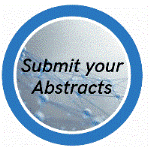Avathvadi Venkatesan Srinivasan
The Tamil Nadu Dr. M.G.R. Medical University, India
Title: Dizziness a doctors dilemma- A ten step approach
Biography
Biography: Avathvadi Venkatesan Srinivasan
Abstract
Introduction:
Professor C. Miller Fisher defined dizziness as false and conflicting sensation of motion and posture. It is a feeling of uncertainty of one’s own physical and spatial orientation as well as motion in space. In health the function of vestibular system is subconscious and not apparent.
Central vestibular system integrates vestibule, visual and proprioception input for the conscious awareness of body position with environment, gaze stabilization, posture and locomotion. Dizziness and disorientation symptoms occurs only when the disease or excessive stimulation of Central vestibular system occur. It can be due to medical and cardiac illness, Otological illness as well as neurological conditions. Most syndrome of dizziness can be correctly diagnosed only by means of careful history taking and physical examination of patients.
Pathophysiology:
Any alteration in the continuous sensory input from visual, vestibular and proprioceptive end organs that enables a person to maintain spatial orientation leads to dizziness. There are many sensations that are perceived as dizziness by patients, which are not synonymous to true vertigo. Hence careful history taking is important.
Clinical features:
There are 6 types of dizziness generally complained, they are true vertigo, syncopal sensation or presyncope, Disequilibrium, Psycho physiologic dizziness and visual induced dizziness, light headedness and giddiness.
Examination:
Standard physical and neurological examination must emphasis on cerebellar testing, test of vestibular function and brain stem signs. The core examination findings required are eye movement assessment, funduscopy, otoscopy, assessment of hearing, Romberg test, Gait and Tandem walking, Dix- Hallpike maneuver.
Etiology:
Vertigo based on specific etiologies is classified as otologic vertigo, central vertigo, Medical vertigo and unlocalized vertigo syndromes.
Ten step approach guidelines:
Step 1- To establish the nature of dizziness, is it vertigo or not?
Step 2- To rule out if it was the first attack or one of the recurrent episode or chronic problems?
Step 3- Duration of attack and trigger factor if any should be obtained
Step 4- Neurological examination
Step 5- status praesens
Step 6- To rule out vestibular causes
Step 7- clinical test to diagnose vestibular involvement
Step 8- Investigation in evaluation of dizziness
Step 9- Medical causes
Step 10- Psychiatric causes
Treatment:
- Treating the underlying cause for non- vertiginous dizziness
- For vertiginous dizziness requires pharmacological therapy, physical therapy, surgery and psychotherapeutic measures
Conclusion:
I have covered the field in a concise and clinically oriented fashion. The team approach, given the complexity for evaluation, Diagnosis and treatment, is the central theme of this communication

